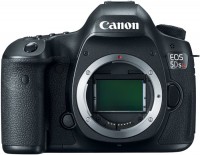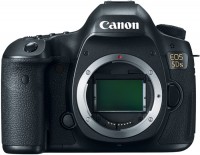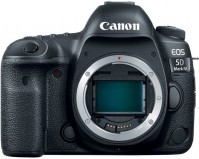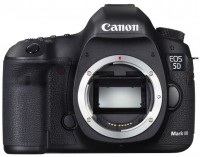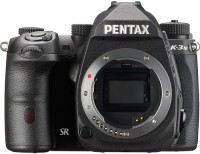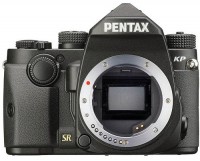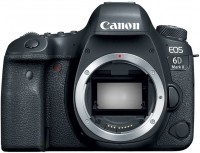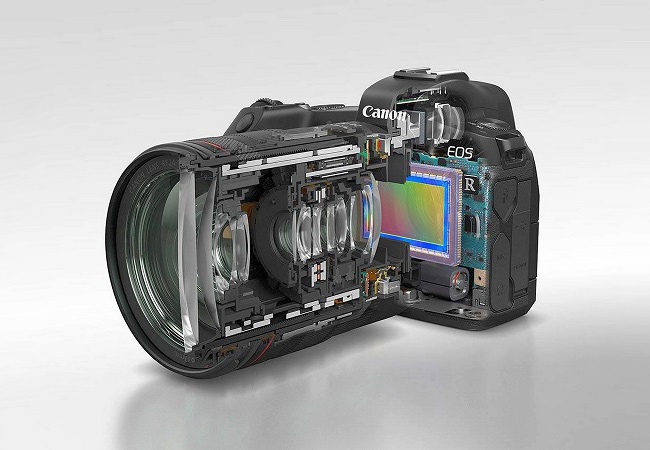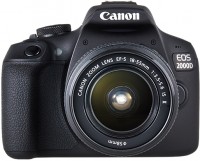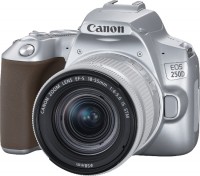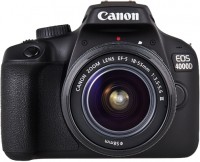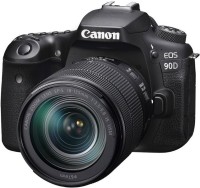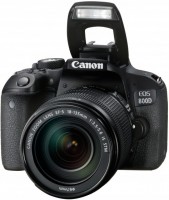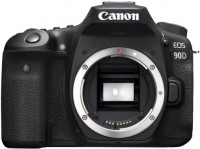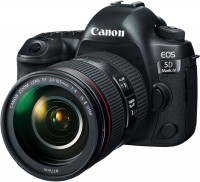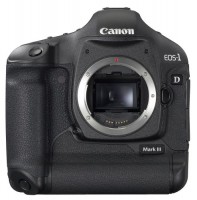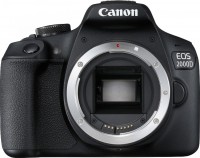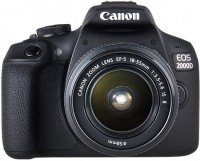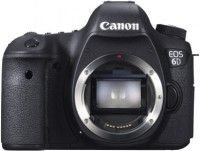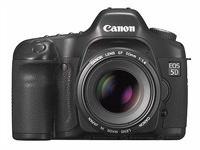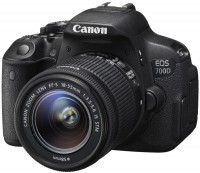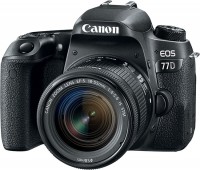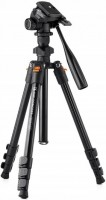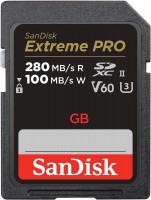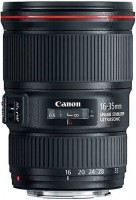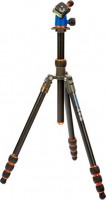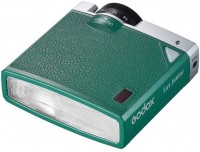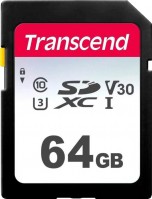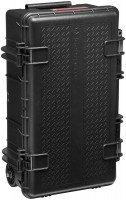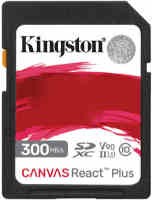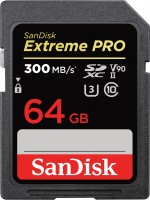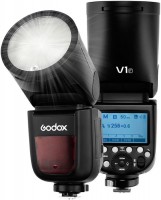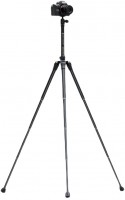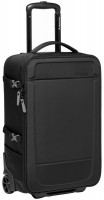Canon EOS 1D Mark II body
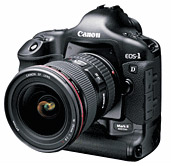 | Outdated Product $2,399.99 Sensor size: APS-H; Effective MP number: 8.5; Manual focus; Image stabilization: is absent; Auto bracketing; Viewfinder: optical (pentaprism); Continuous shooting (fps): 4; Screen ("): 2; Memory cards types: SD, CompactFlash; External flash connect; Power source: battery; Battery capacity (mAh): 1650 |
Canon EOS 1D Mark II body
Panel:APS-H, 8.5 MPix
Snapshot size:3504x2336 px
ISO range:100-1600
Burst shooting:4 fps
Screen:2 ''
All specifications
Specifications EOS 1D Mark II body
|
| ||||||||||||||||||||||||||||||||||||||||||||||||||||||||||||||||||||||||||||||||||||||||||||||||||||||||||||||||||||||||||||||||||||
The information in the model description is for reference purposes.
Always clarify the specifications and configuration of the product with the online store manager before purchasing.
Catalog Canon 2025 - new arrivals, bestsellers, and the most relevant models Canon.
Always clarify the specifications and configuration of the product with the online store manager before purchasing.
Catalog Canon 2025 - new arrivals, bestsellers, and the most relevant models Canon.
Video reviews
From the press release:
Canon EOS 1D Mark II: 69 megapixels per second
The EOS 1D Mark II sets new standards in professional photography. Combining high speed (approx. 8.5 fps) with maximum resolution (8.2 megapixels), the EOS 1D Mark II takes over from the Canon EOS 1D as the world's most powerful digital reflex (D-SLR) camera.
Three new technologies — the next generation Canon DIGIC II processor, a new CMOS sensor and a new high-capacity buffer system — provide the Canon EOS 1D Mark II with a win-win combination of high speed and high resolution. The combined use of these technologies guarantees continuous shooting in bursts of 40 frames at 8.5 fps in JPEG image recording mode, and in RAW format in bursts of 20 frames. Such high performance is achieved in both single-shot autofocus and AI Servo AF.
Unparalleled speed and superb image quality make the EOS 1D Mark II one of the best professional models for sports and news photography. In addition, with nearly double the resolution of its predecessor, the EOS 1D, the EOS 1D Mark II paves the way for digital SLR cameras in fashion, wildlife and event photography.
The perfect choice for professionals
The EOS 1D has already gained wide popularity among sports reporters and photojournalists around the world, and leading media outlets including Reuters, Getty Images and AFP have chosen Canon's professional products for their photographers. “Our editorial photographers are among the world's top reporters covering international news, major sporting events or cultural events. Therefore, their requirements for the performance of photographic equipment are diverse and very high. Canon demonstrates a deep understanding of the requirements of our photographers by creating the latest high-end photography equipment.
New CMOS sensor
The new 28.7mmx19.1mm CMOS sensor (APS-H) has 8.2µm square pixels, which is nearly the same size as the previous award-winning EOS 1Ds, which had a pixel size of 8.8µm . The new noise reduction system built into the sensor eliminates fixed and random noises. A low-pass filter in front of the sensor reduces false colours and moire, while an infrared filter prevents red fringing caused by sensor reflections and fog.
Benefits of a CMOS Sensor
Contrary to the trend in the market to purchase third party CCD sensors, Canon has established its own programme to develop CMOS sensor technology. Investments in research and development have resulted in sensors that differ from competitors' CCD technologies in higher sensitivity, higher resolution, lower noise levels and minimal power consumption. The launch of the EOS 1D Mark II is a major strategic step for Canon, as all Canon DSLR models now feature native CMOS sensors.
Canon believes that manufacturing all the key components of a digital SLR camera in-house offers significant strategic advantages. Canon is currently the only company that can offer DSLR models with three different sensor sizes.
2nd generation DIGIC processor
The next generation DIGIC II processor delivers image processing performance that maximizes resolution and speed. The combination of CMOS sensor technology, DIGIC II processor and new buffer system allows the EOS 1D Mark II to capture and process over 69 million pixels per second. At the same time, the camera is ready for shooting in about 0.5 seconds after being turned on. In addition, improved processor performance has improved image processing algorithms and control of white balance and auto exposure, resulting in improved overall image quality. The photographer can select any of four resolution levels for recording JPEG images, and for each of them, any of ten compression levels. The EOS 1D Mark II supports sRGB and Adobe RGB colour spaces with custom colour saturation and gradation, as well as a choice of five preset and two user-defined colour matrices. White balance offset is corrected by +/— 9 levels for both Cyan/Amber and Magenta/Green scales. A white balance bracket is provided up to +/— 3 steps.
Absolute reliability
Shutter durability improved by 33% to at least 200,000 actuation cycles. The camera is protected from the weather by a durable magnesium alloy housing with 70 moisture-resistant seals.
The "Back-Up" mode, designed for shooting in especially important situations, allows you to record pictures simultaneously on two memory cards — CF and SD. If one of the cards is full, you can cancel the "Back-Up" mode and move on to recording on the card that still has room.
In separate recording mode, images are recorded to either a CF card or an SD card (user selectable). When there is no space left on the selected card for recording, the message “Card Full” appears on the display and the user can switch to recording on a second card if it is installed in the camera.
Camera settings can be stored on a memory card, which is especially valuable for professionals who use carefully selected personal settings that can be easily transferred to rental equipment, or for large agencies that need to standardize the camera settings of many photographers or the resulting file formats.
Flash performance related to distance
The EOS 1D Mark II is equipped with Canon's new E-TTL II flash system, which optimizes exposure control, especially when shooting moving or off-centre flash subjects. Using a new flash algorithm, it links camera and lens distance information from the camera and lens to 21-spot evaluative or integral metering during pre-flash firing. Areas with unacceptably high levels of illumination due to reflected light are not taken into account, which significantly reduces the possibility of errors associated with reflection from the subject.
Complete control
The model has a wide range of ISO sensitivity — from 100 to 1600 — if necessary, you can increase it by choosing an extremely low (ISO 50) or extremely high (ISO 3200) value. Metering, using 21 possible zones, includes the following modes: evaluative (linked to any AF point), partial, centre point, AF point linked spot, multi-point, and centre-weighted integral metering. You can automatically rotate an image, check its focus and composition on the 230,000-pixel LCD monitor, and the 10x zoom with 15 levels of adjustment allows you to get a closer look at selected areas of the image. The following interfaces are provided: video output (for NTSC and PAL display), IEEE1394 (Firewire), and USB. The camera is PictBridge compliant, supports Direct Print, and provides direct printing without a computer to compatible photo printers of any brand. During playback, you can choose to display the brightness or RGB histogram. The shutter operates from 1/8000s to 30s with a 40ms shutter lag, and you can adjust the noise reduction level using Personal Function 26.
RAW Image Processing
The new Digital Photo Professional software bundled with the camera enables high-speed processing of lossless images recorded as RAW files. Processing with Digital Photo Professional takes approx. 6 times faster than the previously supplied File Viewer Utility. The new programme allows you to view images in real time and directly adjust the image. It includes a wide range of editing functions for RAW, TIFF and JPEG images, allowing you to control white balance, dynamic range, exposure compensation and colour tones. sRGB, Adobe RGB, and Wide Gamut RGB colour spaces are supported, and an ICC (International Colour Consortium) profile is automatically attached to RAW images converted to TIFF or JPEG. This ensures natural colour reproduction when viewing images in applications that support ICC profiles, such as Adobe Photoshop. Now it has become possible, when processing images, to make changes to various parameters not sequentially, as before, but in batches, which significantly increases productivity when editing complex images of the same image.
In addition, the EOS Viewer Utility is included to control camera settings such as white balance, tone curve, colour matrix settings, JPEG image quality, and personal functions.
Compatible with lenses and flashes
The EOS 1D Mark II is compatible with over 60 Canon EF lenses (excluding the EF-S lens) and all EX-series Speedlites.
Canon EOS 1D Mark II: 69 megapixels per second
The EOS 1D Mark II sets new standards in professional photography. Combining high speed (approx. 8.5 fps) with maximum resolution (8.2 megapixels), the EOS 1D Mark II takes over from the Canon EOS 1D as the world's most powerful digital reflex (D-SLR) camera.
Three new technologies — the next generation Canon DIGIC II processor, a new CMOS sensor and a new high-capacity buffer system — provide the Canon EOS 1D Mark II with a win-win combination of high speed and high resolution. The combined use of these technologies guarantees continuous shooting in bursts of 40 frames at 8.5 fps in JPEG image recording mode, and in RAW format in bursts of 20 frames. Such high performance is achieved in both single-shot autofocus and AI Servo AF.
Unparalleled speed and superb image quality make the EOS 1D Mark II one of the best professional models for sports and news photography. In addition, with nearly double the resolution of its predecessor, the EOS 1D, the EOS 1D Mark II paves the way for digital SLR cameras in fashion, wildlife and event photography.
The perfect choice for professionals
The EOS 1D has already gained wide popularity among sports reporters and photojournalists around the world, and leading media outlets including Reuters, Getty Images and AFP have chosen Canon's professional products for their photographers. “Our editorial photographers are among the world's top reporters covering international news, major sporting events or cultural events. Therefore, their requirements for the performance of photographic equipment are diverse and very high. Canon demonstrates a deep understanding of the requirements of our photographers by creating the latest high-end photography equipment.
New CMOS sensor
The new 28.7mmx19.1mm CMOS sensor (APS-H) has 8.2µm square pixels, which is nearly the same size as the previous award-winning EOS 1Ds, which had a pixel size of 8.8µm . The new noise reduction system built into the sensor eliminates fixed and random noises. A low-pass filter in front of the sensor reduces false colours and moire, while an infrared filter prevents red fringing caused by sensor reflections and fog.
Benefits of a CMOS Sensor
Contrary to the trend in the market to purchase third party CCD sensors, Canon has established its own programme to develop CMOS sensor technology. Investments in research and development have resulted in sensors that differ from competitors' CCD technologies in higher sensitivity, higher resolution, lower noise levels and minimal power consumption. The launch of the EOS 1D Mark II is a major strategic step for Canon, as all Canon DSLR models now feature native CMOS sensors.
Canon believes that manufacturing all the key components of a digital SLR camera in-house offers significant strategic advantages. Canon is currently the only company that can offer DSLR models with three different sensor sizes.
2nd generation DIGIC processor
The next generation DIGIC II processor delivers image processing performance that maximizes resolution and speed. The combination of CMOS sensor technology, DIGIC II processor and new buffer system allows the EOS 1D Mark II to capture and process over 69 million pixels per second. At the same time, the camera is ready for shooting in about 0.5 seconds after being turned on. In addition, improved processor performance has improved image processing algorithms and control of white balance and auto exposure, resulting in improved overall image quality. The photographer can select any of four resolution levels for recording JPEG images, and for each of them, any of ten compression levels. The EOS 1D Mark II supports sRGB and Adobe RGB colour spaces with custom colour saturation and gradation, as well as a choice of five preset and two user-defined colour matrices. White balance offset is corrected by +/— 9 levels for both Cyan/Amber and Magenta/Green scales. A white balance bracket is provided up to +/— 3 steps.
Absolute reliability
Shutter durability improved by 33% to at least 200,000 actuation cycles. The camera is protected from the weather by a durable magnesium alloy housing with 70 moisture-resistant seals.
The "Back-Up" mode, designed for shooting in especially important situations, allows you to record pictures simultaneously on two memory cards — CF and SD. If one of the cards is full, you can cancel the "Back-Up" mode and move on to recording on the card that still has room.
In separate recording mode, images are recorded to either a CF card or an SD card (user selectable). When there is no space left on the selected card for recording, the message “Card Full” appears on the display and the user can switch to recording on a second card if it is installed in the camera.
Camera settings can be stored on a memory card, which is especially valuable for professionals who use carefully selected personal settings that can be easily transferred to rental equipment, or for large agencies that need to standardize the camera settings of many photographers or the resulting file formats.
Flash performance related to distance
The EOS 1D Mark II is equipped with Canon's new E-TTL II flash system, which optimizes exposure control, especially when shooting moving or off-centre flash subjects. Using a new flash algorithm, it links camera and lens distance information from the camera and lens to 21-spot evaluative or integral metering during pre-flash firing. Areas with unacceptably high levels of illumination due to reflected light are not taken into account, which significantly reduces the possibility of errors associated with reflection from the subject.
Complete control
The model has a wide range of ISO sensitivity — from 100 to 1600 — if necessary, you can increase it by choosing an extremely low (ISO 50) or extremely high (ISO 3200) value. Metering, using 21 possible zones, includes the following modes: evaluative (linked to any AF point), partial, centre point, AF point linked spot, multi-point, and centre-weighted integral metering. You can automatically rotate an image, check its focus and composition on the 230,000-pixel LCD monitor, and the 10x zoom with 15 levels of adjustment allows you to get a closer look at selected areas of the image. The following interfaces are provided: video output (for NTSC and PAL display), IEEE1394 (Firewire), and USB. The camera is PictBridge compliant, supports Direct Print, and provides direct printing without a computer to compatible photo printers of any brand. During playback, you can choose to display the brightness or RGB histogram. The shutter operates from 1/8000s to 30s with a 40ms shutter lag, and you can adjust the noise reduction level using Personal Function 26.
RAW Image Processing
The new Digital Photo Professional software bundled with the camera enables high-speed processing of lossless images recorded as RAW files. Processing with Digital Photo Professional takes approx. 6 times faster than the previously supplied File Viewer Utility. The new programme allows you to view images in real time and directly adjust the image. It includes a wide range of editing functions for RAW, TIFF and JPEG images, allowing you to control white balance, dynamic range, exposure compensation and colour tones. sRGB, Adobe RGB, and Wide Gamut RGB colour spaces are supported, and an ICC (International Colour Consortium) profile is automatically attached to RAW images converted to TIFF or JPEG. This ensures natural colour reproduction when viewing images in applications that support ICC profiles, such as Adobe Photoshop. Now it has become possible, when processing images, to make changes to various parameters not sequentially, as before, but in batches, which significantly increases productivity when editing complex images of the same image.
In addition, the EOS Viewer Utility is included to control camera settings such as white balance, tone curve, colour matrix settings, JPEG image quality, and personal functions.
Compatible with lenses and flashes
The EOS 1D Mark II is compatible with over 60 Canon EF lenses (excluding the EF-S lens) and all EX-series Speedlites.



